This thick and creamy vegan mayonnaise is an excellent egg-free substitute for regular mayo. You can use vegan mayo for sandwiches, as a base for dressings, and in salads.
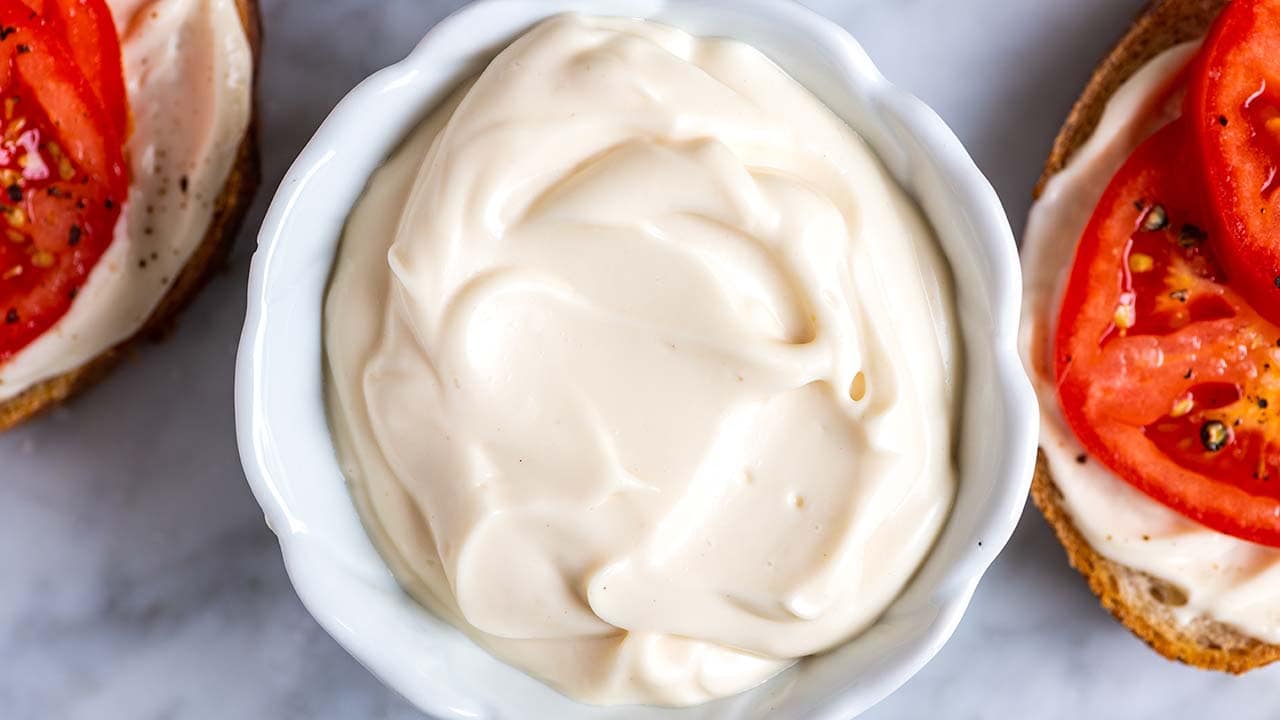
You can make vegan mayo in two ways: using soy milk or with aquafaba. I’ve included tips for both below!
Our vegan mayo recipe is easy, tastes incredible, and lasts in the fridge for 2 weeks.
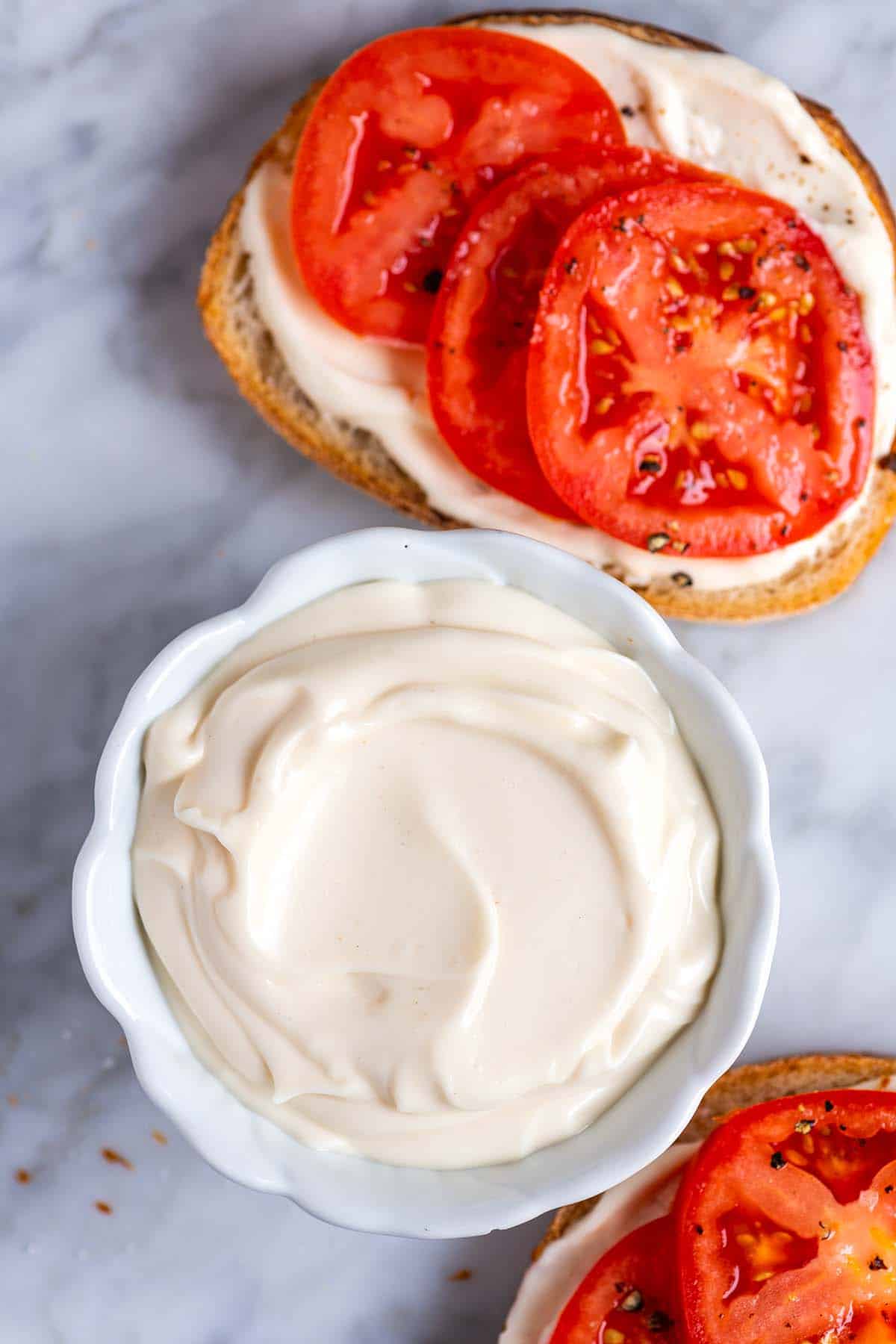
Key Ingredients
- Soy milk or aquafaba: Our vegan mayonnaise recipe works well with soy milk or aquafaba. If I had to pick one, I would lean towards soy milk. If you cannot eat soy or have a can of chickpeas lying around, my recipe below works well when made with aquafaba (here’s my ultimate guide to aquafaba).
- Oil: Just like when making regular mayonnaise, you must stream in oil to thicken the mayonnaise. I use a neutral oil like safflower or vegetable oil. Olive oil is an option, but your mayo will pick up the flavor of your olive oil, so I recommend a lighter, fruitier bottle.
- Vinegar: Red wine vinegar, white wine vinegar, or apple cider vinegar adds tanginess. Vinegar livens up all the other ingredients and makes it taste delicious.
- Salt: As with most recipes, salt is essential in making the mayo taste good. So, add a pinch more salt if your mayonnaise doesn’t pop in flavor. I bet it will fix it!
- Dijon mustard: Mustard is another emulsifier and adds extra tanginess. When making our egg-based recipe, we add mustard and love it, so it is perfect for adding here.
- Lemon juice: We list fresh lemon juice as an optional ingredient, but I always add some when I have lemons.
- Sweetener: I typically do not add any sweetener, but it does an excellent job balancing out the vinegar. You can add maple syrup, brown rice syrup, and even cane sugar.
How to Make Vegan Mayonnaise
When making the more traditional egg-based mayo, oil is slowly whipped or blended into the egg. By doing this slowly, the mixture emulsifies. That’s why mayonnaise is thick, white, and creamy.
When making vegan mayo, the method is no different. In the egg-based recipe, the egg is what aids in the emulsification process. Whereas, in the vegan recipe, soy milk or aquafaba do the heavy lifting.
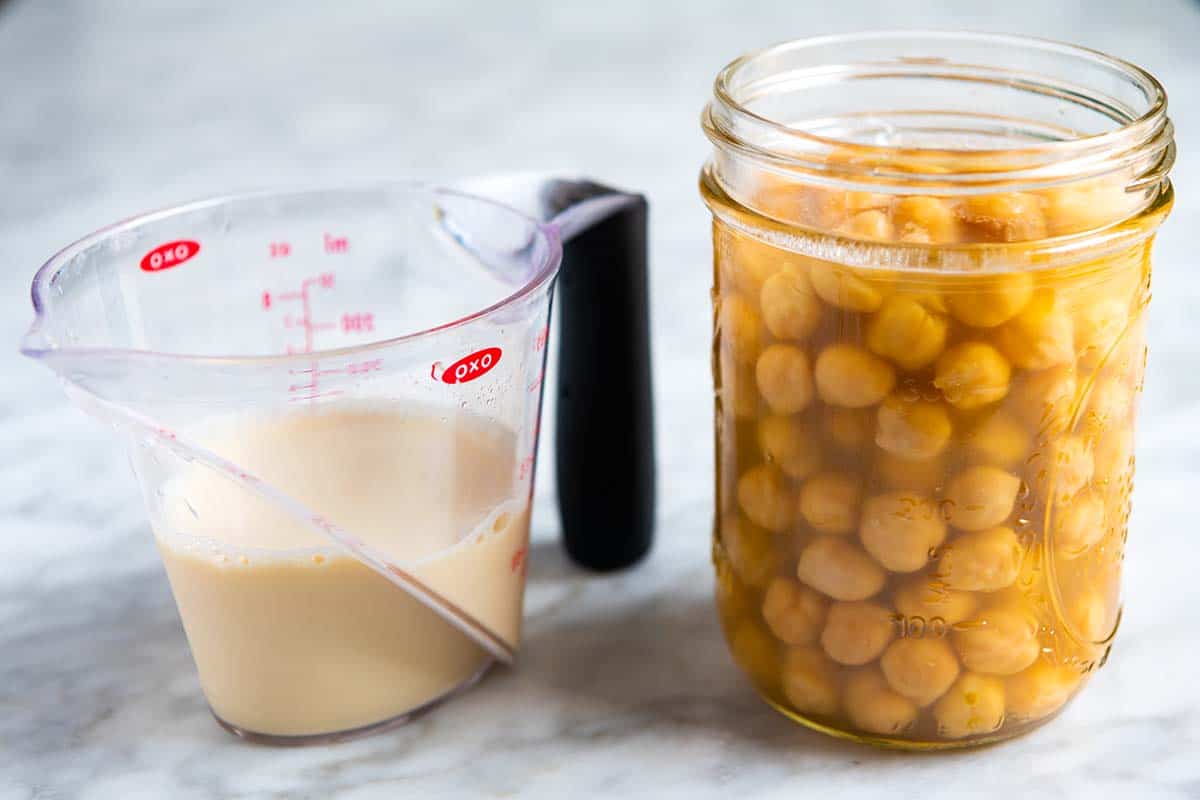
A food processor is my device of choice when making vegan mayo. Whenever I use it, the recipe always works. Mayonnaise is an emulsification, meaning the oil is suspended in the soy milk (or aquafaba), making a thick and creamy mixture.
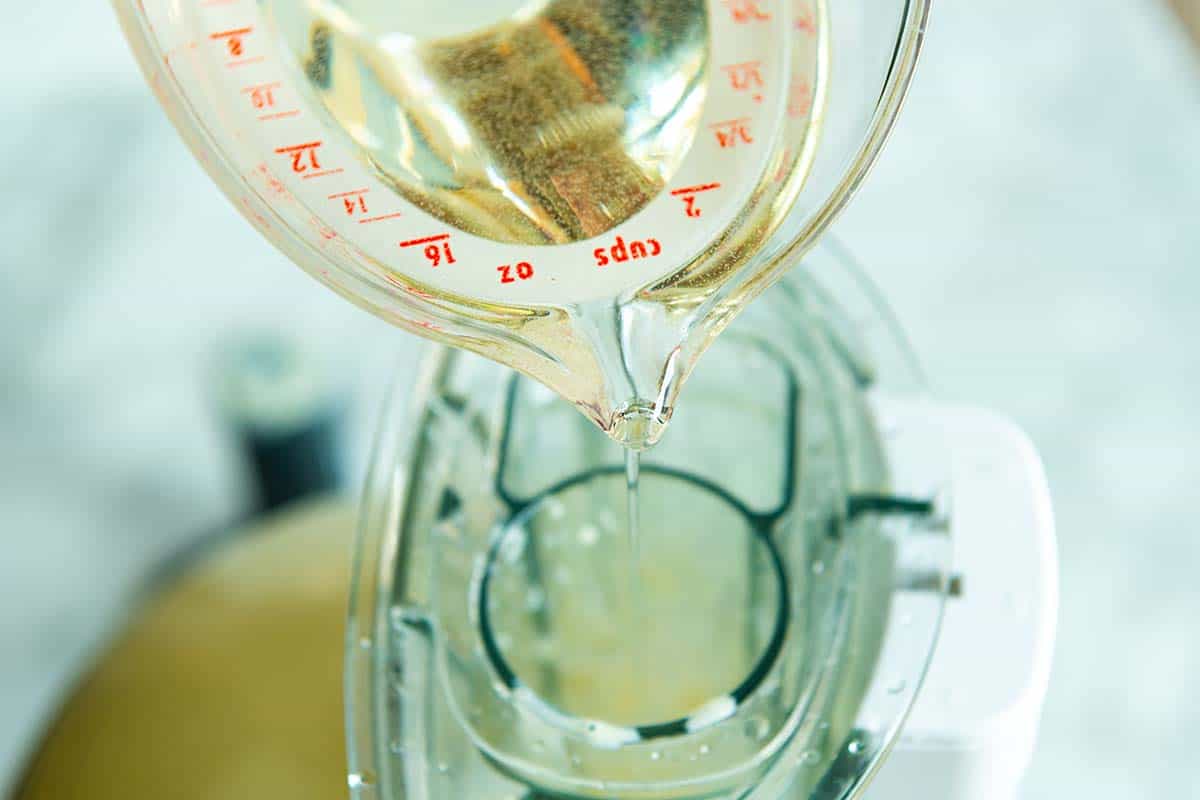
Using a food processor makes it easy to add the oil slowly. When you make mayo, you want to add the oil drop by drop at first. I know it takes time, but trust me, adding the oil slowly helps the emulsification process. Add it too quickly, and your mayonnaise may never thicken, leaving you with a mess.
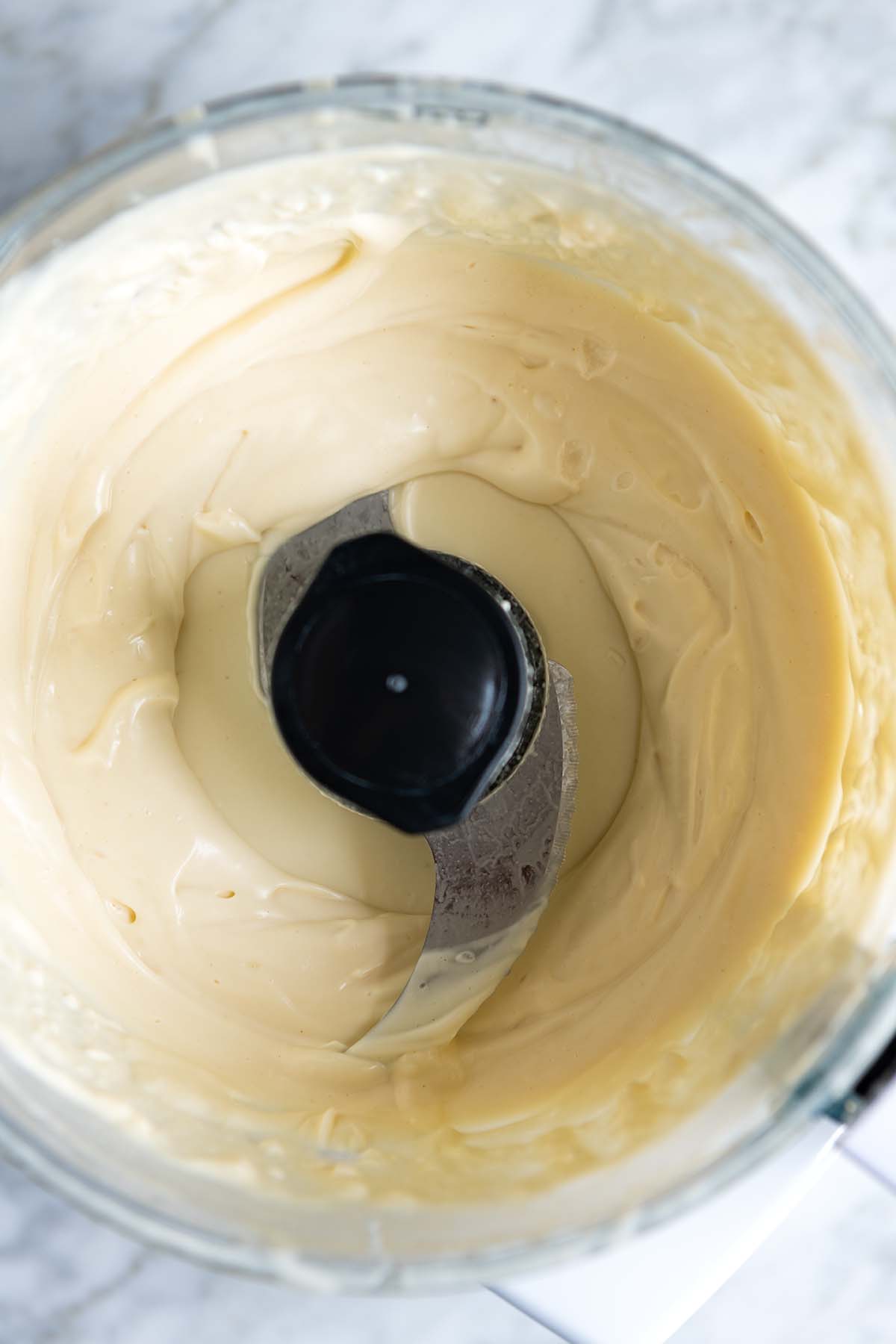
You can also use an immersion blender to make this vegan mayo recipe. Use a tall jar, and remember to add some air towards the end of making the mayo. I do this by slowly moving the blender up and down. As you do this, you will notice that the mayonnaise gets thicker.
Regular blenders are not as foolproof for this recipe. It’s possible to make this recipe using your blender, but we have not had as much success with it as with the food processor and immersion blender.
You can also make it by hand, but it will take some time and elbow grease. I highly recommend the food processor or immersion blender.
Ways to Use Vegan Mayonnaise
Homemade vegan mayonnaise isn’t just for sandwiches! Use it to make one of these delicious salads: We love using it to make our potato salad, our creamy coleslaw or our broccoli salad.
It’s absolutely perfect for making tuna Salad or chicken salad. If you don’t eat seafood or meat, simply substitute the tuna or chicken for mashed chickpeas like we do for this smashed chickpea salad.
You can also turn mayo into your own creamy sauces! Try this simple tartar sauce or make my easy fry sauce.
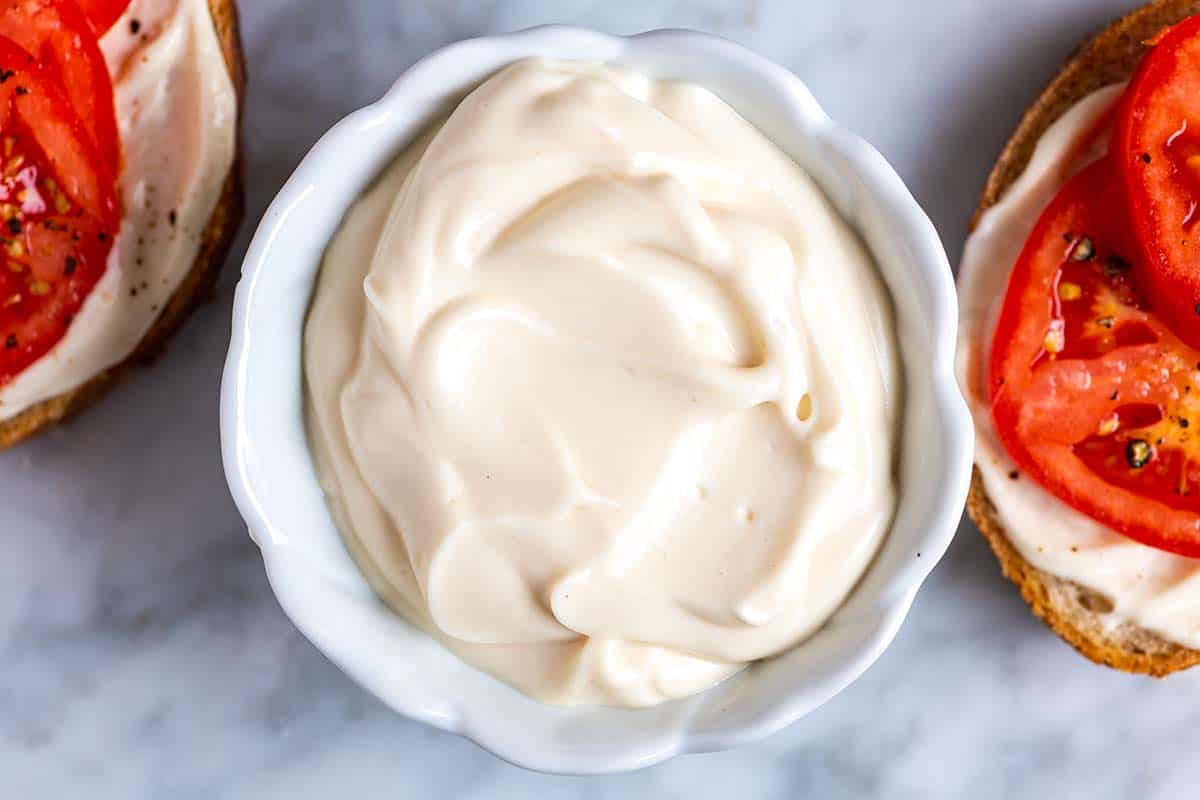
Easy Vegan Mayonnaise
- PREP
- TOTAL
Vegan mayonnaise is an excellent egg-free substitute for regular mayonnaise. We use it for sandwiches, as a base for dressings, and in salads. Below are methods for making vegan mayo in a food processor and using an immersion blender. We have not had as much success with a regular blender.
For the best results, use room-temperature ingredients.
Watch Us Make the Recipe
You Will Need
1/2 cup (120ml) soy milk, at room temperature
1 tablespoon red or white wine vinegar
1/4 teaspoon fine sea salt, plus more to taste
1 ½ teaspoons Dijon mustard
1 teaspoon fresh lemon juice, optional
1 cup (236ml) neutral oil like safflower oil or vegetable oil
Pinch cane sugar or maple syrup, optional
Directions
- Using a Food Processor
1Add the soy milk to a food processor bowl. Process for 1 minute or until the liquid begins to thicken.
2Add the vinegar, salt, mustard, and lemon juice, and process for another 30 seconds until well blended.
3Scrape the sides and bottom of the bowl. Then, with the food processor running, slowly add the oil in tiny drops until about a quarter of the oil has been added (slowly adding the oil is critical for proper emulsification).
4When you notice that the mixture is beginning to thicken and emulsify, you can be a little less strict. Continue to add the oil slowly, but increase to a thin stream instead of drops of oil.
5After adding all the oil, scrape the bowl and then process for 10 seconds.
6Taste the vegan mayo, and then adjust with more salt or a sweetener if you feel it needs it.
7As the mayonnaise sits in the fridge, it thickens even more (after 3 to 4 hours). If the mayonnaise is too thin, you can blend more oil. Do this slowly.
- Using an Immersion Blender
1Add the soy milk, vinegar, salt, and mustard to a tall glass jar or cup with an immersion blender.
2Blend on high with an immersion blender until the mixture begins to thicken.
3With the immersion blender on high speed, slowly add the oil. This will take one to two minutes. Adding the oil slowly helps the mayonnaise emulsify and thicken.
4As you finish adding the oil, move the immersion blender up and down to introduce some air.
5As the mayonnaise sits in the fridge, it thickens even more (after 3 to 4 hours). If the mayonnaise is too thin, you can blend more oil. Do this slowly.
Adam and Joanne's Tips
- Storing: Store vegan mayo in an airtight container in the refrigerator for 2 weeks. As it sits, some liquid might pool at the top. However, I’ve found that it mixes back with a spoon with no issues. I do not recommend freezing.
- Substitute soy milk with aquafaba: Use 1/4 cup (60ml) of aquafaba. The aquafaba whips up to a larger volume, so we use less than when making this recipe with soy milk. The other ingredients listed in the recipe do not need to change. Since we use less aquafaba, there may not be enough liquid for the processor blades to blend at first. Once you start adding the other ingredients, you should be okay. I’ve had the best results with aquafaba from canned beans. Before opening the can, vigorously shake it so the aquafaba becomes extra starchy from the beans.
- The nutrition facts provided below are estimates. Calculations are for mayonnaise made with soy milk and no added sweetener.

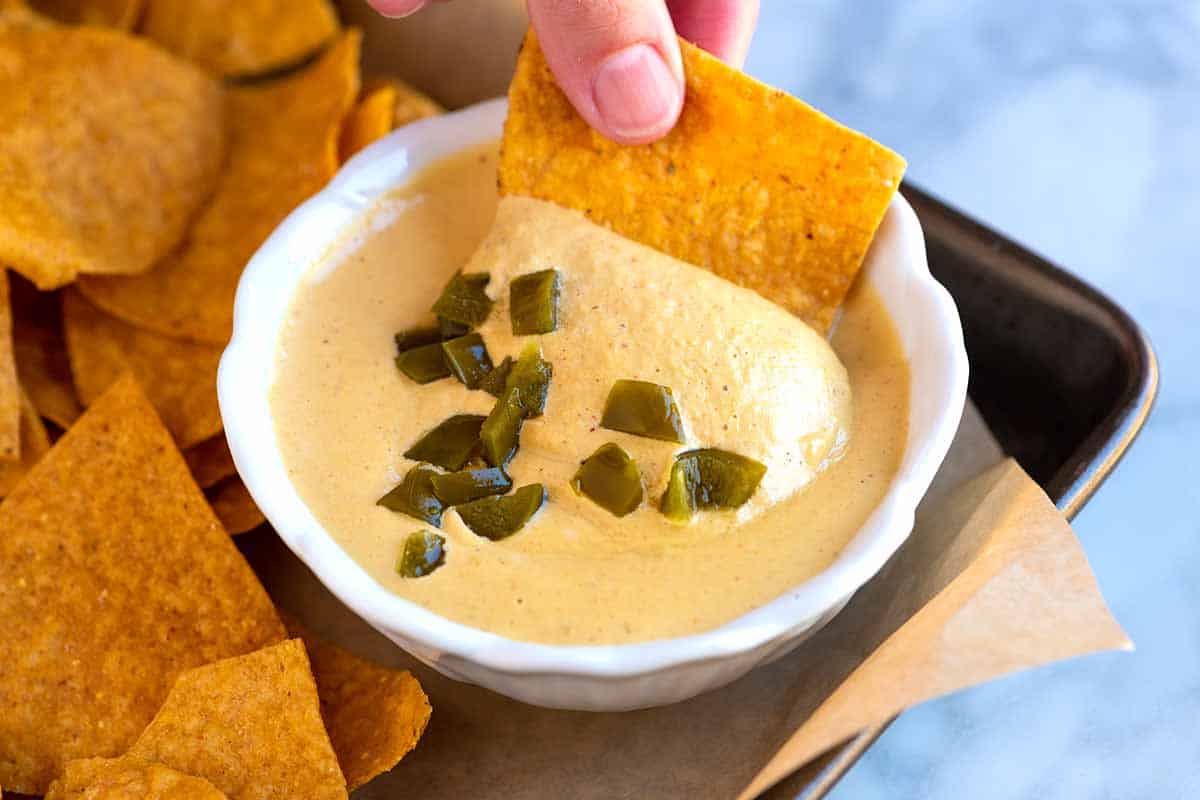
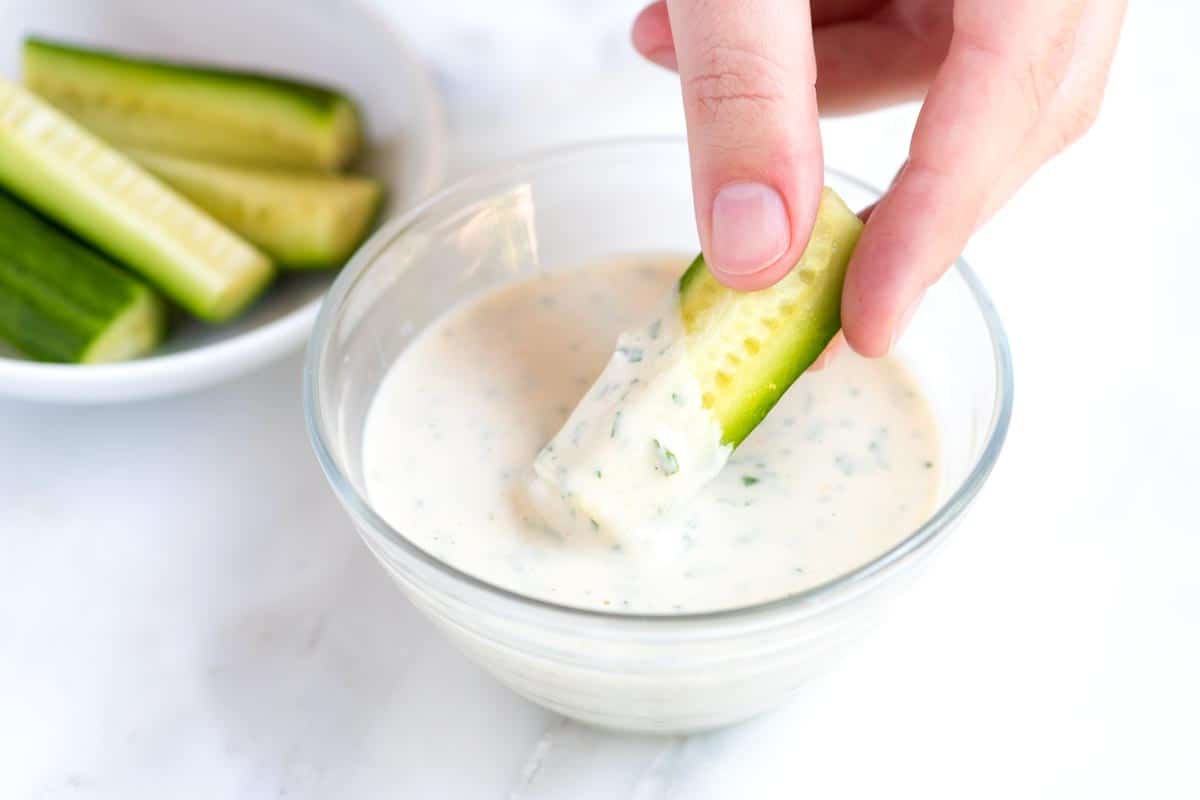
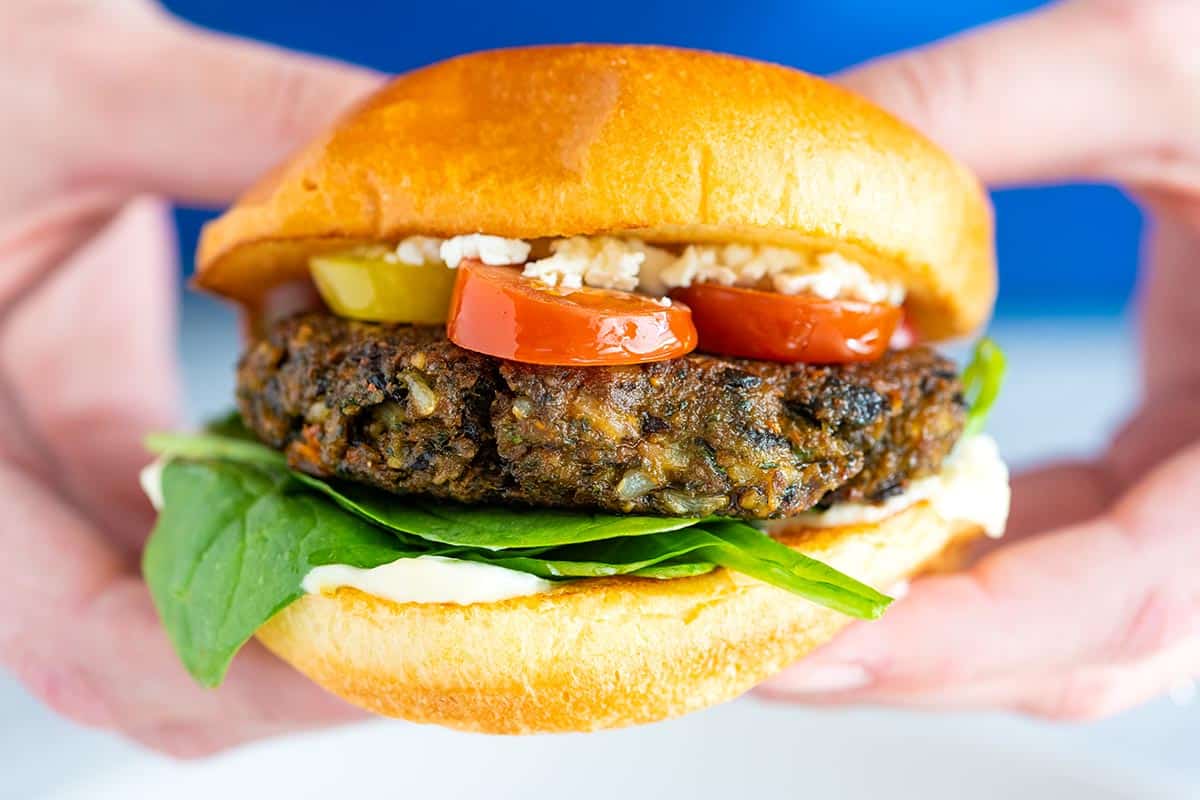
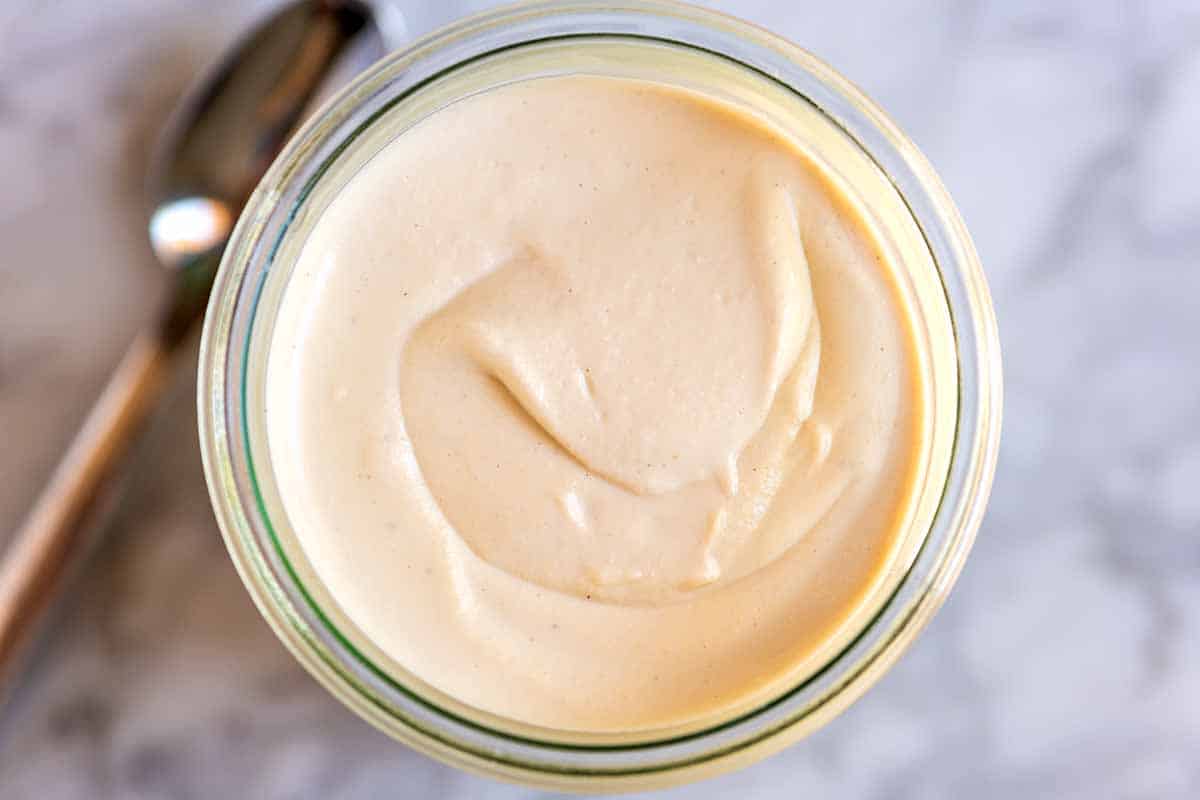
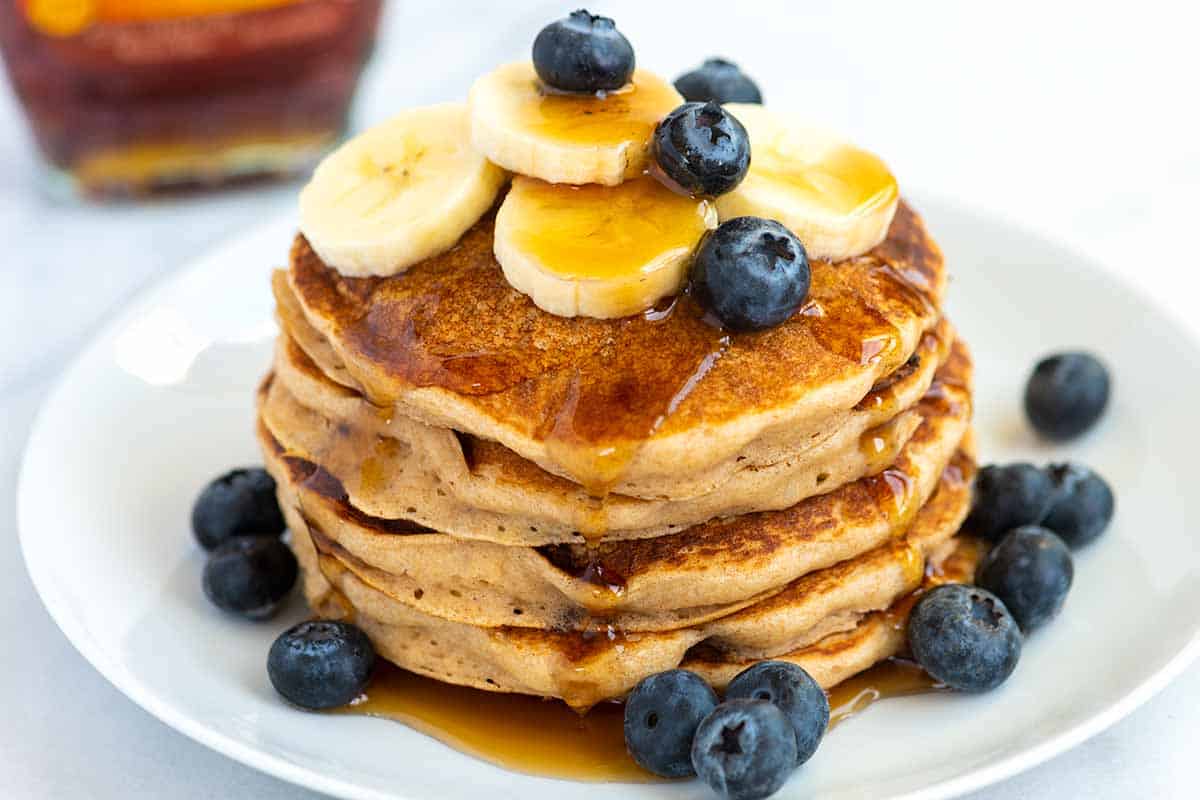
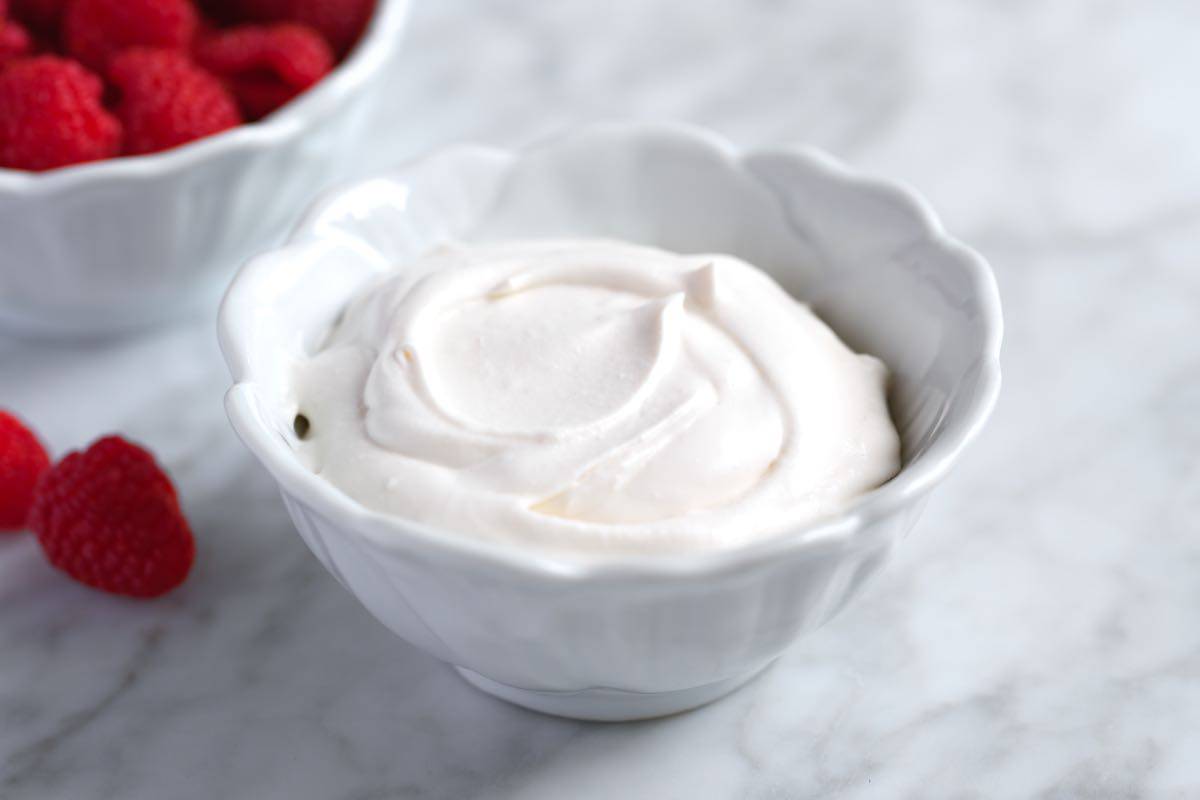


This was amazing! It was so easy! I ran out of mayo and didn’t want to risk raw eggs for regular mayo because I’m pregnant, so this was a life saver! Used the aquafaba as I’ve been eating a lot of chickpeas and always have some of it on hand.
This is an excellent recipe! Best mayo I ever tasted and no fancy ingredients needed. Could olive or avocado oil be substituted? Thank you so much for sharing this!
I tried again with soy milk and it is thick and delicious. It took ages and heated up the stick blender, so next time, I will observe the room temp. Suggestion and see if that makes a difference. I am so happy to be rid of another commercial product! Thank you.
Woah. This recipe really works! I’m based in SE Asia where it’s hard to find plant based mayo, so gave this a whirl. I can’t believe it worked! I was worried I’d muck up the emulsification step with the oil, but it was absolutely fine. I didn’t need to add the optional sweetener.
I liked the texture and consistency but I feel like all I could taste is the vinegar (I hate vinegar) is there anyway I could add less of it? Or replace with something else? Thanks!
You can try lemon.
This recipe is great! I use it as a base for homemade Caesar dressing and it works perfectly! I didn’t change a thing!
I didn’t think there was any way I could do this successfully (I’m not the best in the kitchen), but I made creamy-fluffy plant based mayo with this recipe! It tasted great and I’m getting ready to make my second batch. So if you’re on the fence — try it! You might be impressed with yourself.
Excellent recipe. I blend everything (half oil) in a small blender for about min then the rest of the oil, blend again, and it turned out great. Close to the one I buy at the grocery store. Thank you !